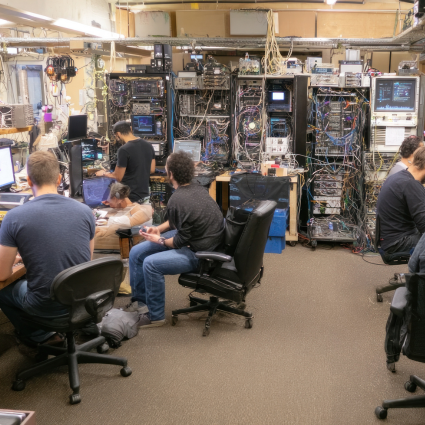Across all levels of education, the typical classroom is becoming more high-tech and more connected, thus the need for distributed network monitoring. During a typical lecture the instructor might play a short video from YouTube, ask students to take a pop-quiz on their laptops, or he/she might be teaching the class remotely. On top of that, campuses are the ultimate BYOD environments with students demanding omnipresent and reliable Wi-Fi connectivity on their devices for work, socializing, and fun. Students live on Wi-Fi.
Supporting the network infrastructure of the educational vertical becomes even more complicated and challenging when we factor in school districts and satellite campuses. They are spread across large geographical areas and a centralized IT supports thousands of students and faculty. Each user needs 24/7 connectivity (let’s not forget the night owls) to do homework, take lecture notes, and ultimately, succeed.
In this environment, end-user experience is of outmost importance and is where agent-based distributed network monitoring comes into play. For the network engineer to know exactly what’s going on at the wired and wireless network locations of his jurisdiction, they need monitoring tools that not only tell them the status of the routers, switches, and firewalls, but also the end-to-end user experience is like. The purpose of the agents is to simulate an end-user and report the experience to the network engineer. The agents can send alerts when they can’t connect to a specific SSID or when access to Google, Wikipedia, or YouTube is subpar. In addition, the data collected gives information about the exact timeline of events such as the beginning and end of outages.
(Two related blog posts: Introduction to Distributed Network Monitoring and Top 5 Use Cases for Distributed Network Monitoring)
Here is a point-by-point analysis of how distributed network monitoring addresses the idiosyncrasies of network and application monitoring in the educational space:
Active Wi-Fi Monitoring
The vast majority of users are on wireless devices. Wi-Fi problems are often intermittent and troubleshooting requires boots on the ground. It has to be stressed that monitoring the access points themselves is not enough since connectivity might be affected by signal strength, interference, noise, and other factors. A monitoring agent that runs active tests on the wireless channel is often the only way to know the experience of the end user (except for students calling the help desk and complaining on Twitter about their school’s Wi-Fi quality).
Proactive Video Monitoring
Most schools use video routinely for distance learning or lecture material. Not being able to deliver quality real-time video is disruptive to the educational process, and the problem is often detected at the beginning of the lecture, leaving students and faculty lingering. Active agent-based monitoring enables proactive detection of streaming issues before somebody tries to watch a video. This gives time to the network engineer to fix streaming issues as soon as they appear and before they affect users. In addition, students and faculty can be notified about the problems and plan accordingly.
Internet Usage
Students and faculty need access to the open Internet (except for NSFW sites that need to be filtered) for doing research, accessing on and off campus library and scientific journal catalogues, and even for their entertainment. Again, these use cases are similar to the previous one since the IT must guarantee uninterrupted and high bandwidth accessibility. And the best way to monitor and be proactive in terms of network delivery is to monitor the network from the end-user perspective by using an agent-based distributed network monitoring tool.
Remote Locations
Schools in a district and satellite campuses are often served by a centralized IT that needs to dispatch engineers to troubleshoot and fix problems locally. If a dispatch is not needed, the network engineer often has to spend considerable amount of time on the phone with local users or on RDP to collect information about the scale of the problem (which users are affected and where) and make sure that the problem is fixed. This type of hassle can be avoided by relying on agents deployed at each location that monitor the local connectivity and report the results to a centralized dashboard.
Conclusion on Technology in Education
K-12 and higher education schools are usually non-profit and have tight IT budgets. Most of them, though, have invested heavily in networking infrastructure over the last two decades, and for good reasons. The value of seamless access to online and distance learning, the Internet at large, and educational tools is unquestionable. For the delivery of these services, the typical network engineer should have every tool at his disposal to guarantee excellent user experience for both students and faculty. Agent-based distributed network monitoring has a role to play in this realm. Learn more about NetBeez’s solution for the Education sector, or download the WiFi monitoring guide by NetBeez.





